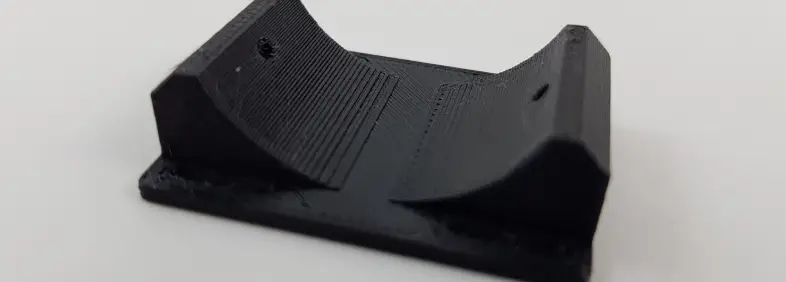No products in the basket.
Cart
3D Printing in PETG
PETG is a widely used and appreciated 3D printing material. Compared to PLA and ABS, it stands out for its temperature resistance, being stronger than PLA but less than ABS. It begins to soften at 80ºC, while PLA softens at 70ºC and ABS at 105ºC.
In terms of strength, PETG is the most durable, being difficult to break due to better layer adhesion. Although it is less rigid than PLA and ABS, the difference with ABS is minimal. It is also important to highlight that PETG has FDA approval for food contact and is highly resistant to acidic and basic chemicals.





Advantages of PETG
When is the perfect material choice?
Excellent for shape and fit prototyping
Some flexibility under tension, it will bend instead of breaking
Medium resistance to impacts and chemicals
Prototyping of parts that may be under load or forces
Basic shapes with minimal intricate features
Printing times from the next working day!
Disadvantages of PETG
When to look for other material options
Requires supports and may affect the visual quality of the part
The surface finish can sometimes be worse than that of PLA
It can sometimes have a fibrous surface texture
It is not suitable for painting or varnishing
It is not good for capturing small details
Sanding or painting it requires more post-processing time than resin or ABS
Available Colors

Black
Pantone
Black
Pantone
Black

White
Pantone
White
Pantone
White

Blue
Pantone
7689C
Pantone
7689C

Red
Pantone
485C
Pantone
485C
Technology used

FDM, or fused deposition modeling, is a manufacturing process used for prototyping and the production of small to medium runs. This modeling uses an additive function, depositing the material in layers to shape the part.
A filament is used that is initially stored in rolls, and is fed into a nozzle that is above the melting temperature of the material and can move in three axes controlled electronically. The nozzle moves to deposit the material in the correct location, drawing the model line by line. Once a layer is drawn, the base lowers by a layer thickness (0.1-0.4) so that the printer can continue with the next layer.
When the model to be printed has sections that protrude or have a steep angle, a support structure is created where necessary and is printed in a material that can later be easily removed, in some cases soluble. This is done to ensure that the model does not hang in the air, thus preventing the layer from falling.
Technical specifications
| Property | Value | Test Method |
|---|---|---|
| Density | 1,12 g/cm^3 | ISO 1183-1-A |
| Tensile Strength | 45 MPa | DIN 53504-S2 |
| Flexural Strength | 70 MPa | ISO 178 |
| Tensile Strength | 50 MPa | ISO 527 |
| Elongation | 54 % | ISO 527 |
| Softening Temperature | 85 ºC | ASTM D3418 |